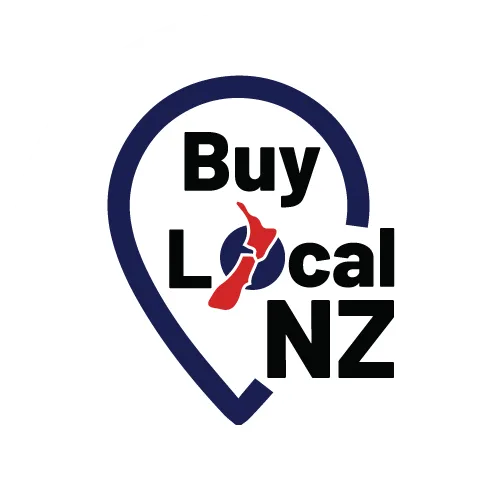
How to Rank Higher on Google Maps: 2024
You'll improve your Google Maps ranking in 2024 by focusing on six key areas: optimising your Google Business Profile, building local citations, managing customer reviews, creating location-specific content, maximising mobile performance, and tracking analytics. Start by verifying your business information, maintaining consistent NAP details across platforms, and encouraging customer reviews. By implementing these proven strategies, you'll discover the specific techniques that drive local search success.
Understanding Google Maps Business Ranking Factors
Before you can improve your Google Maps ranking, it's imperative to understand the key factors that influence how businesses appear in local search results.
Google evaluates your business based on three primary elements: relevance, distance, and prominence.
Relevance measures how well your business listing matches what users are searching for. Distance calculates how far your location is from the searcher's location or specified search area. Prominence assesses your business's overall reputation, including reviews, citations, and online presence.
Your Google Business Profile optimisation, customer reviews, local citations, and website SEO all play vital roles in determining your ranking.
Breaking free from traditional marketing limitations, you'll need to master these elements to stand out in your local market and attract more customers through Google Maps.
Optimising Your Google Business Profile for Local Search
To boost your local search visibility, you'll need to fully verify your Google Business Profile with accurate contact details, hours, and location information.
Adding high-quality photos of your business's interior, exterior, products, and team members will help potential customers connect with your brand and increase engagement.
Select the most relevant business categories for your listing, as this helps Google understand your services and match you with the right search queries.
Verify Business Information Completely
Verifying your business information stands as one of the most essential steps for optimising your Google Business Profile. You'll need to confirm every detail, from your business name and address to operating hours and contact information. Don't skip any fields - complete verification shows Google you're committed to accuracy.
Take control of your digital presence by double-checking your primary business category, service area, and website URL.
Make sure your phone number is current and rings directly to your business. Update your holiday hours and any temporary changes promptly. Remember to use your actual street address rather than a P.O. box, and include suite numbers or building identifiers if applicable.
This attention to detail will boost your credibility with both Google and potential customers.
Add Photos and Categories
Visual content and accurate categorisation serve as two powerful drivers of your Google Business Profile's visibility. Upload high-quality photos showcasing your products, services, team, and premises to build trust and engage potential customers. Choose your primary category strategically, then add relevant secondary categories to expand your reach.
| Photo Type | Impact |
|---|---|
| Exterior | Helps customers find your location |
| Interior | Shows ambiance and professionalism |
| Products | Displays what you're selling |
Don't settle for stock photos - they won't set you apart from competitors. Instead, take authentic shots that capture your business's unique personality. Remember to update your photo gallery regularly and guarantee all images are well-lit, properly framed, and relevant to your offerings. This dynamic approach to visual content management will boost your profile's engagement and search visibility.
Building Local Citations and Business Directory Presence
Getting your business listed in credible online directories and citation sites is essential for improving your Google Maps rankings.
You'll want to focus on maintaining consistent NAP (name, address, phone) information across major platforms like Yelp, Yellow Pages, and industry-specific directories.
Building these citations not only helps search engines verify your business's legitimacy but also creates valuable backlinks that boost your local search presence.
Major Citation Building Strategies
Local citations and business directory listings serve as critical pillars for improving your Google Maps ranking. To maximise their impact, focus on these powerful strategies:
Start with major platforms like Yelp, Yellow Pages, and BBB to establish your core presence.
Then, target industry-specific directories relevant to your business niche. Break free from traditional limitations by exploring emerging platforms and local community websites.
Ensure your NAP (Name, Address, Phone) information remains consistent across all citations.
You'll want to regularly audit and update your listings, removing duplicates and correcting outdated information.
Don't forget to include high-quality photos, business hours, and service descriptions in your listings.
Take control of your citations by claiming and verifying ownership on each platform, enabling you to respond to reviews and maintain accurate information.
Local Directory Submission Tips
When submitting your business to local directories, following proven submission techniques can dramatically boost your visibility and credibility. Start by creating a standardized NAP (Name, Address, Phone) format and stick to it across all directories.
Don't settle for just the major players - seek out niche and industry-specific directories that attract your target audience.
Break free from conventional limits by leveraging user-generated content platforms and local community boards. Submit your business strategically to directories with high domain authority and regular traffic.
Monitor your submissions regularly to maintain accuracy and respond promptly to reviews. Take control by claiming and verifying your listings, especially on platforms that offer enhanced features.
Remember to include high-quality photos, accurate business hours, and relevant category selections to maximise your directory presence.
Managing Customer Reviews and Ratings
Customer reviews and ratings serve as powerful social proof that can greatly impact your Google Maps ranking.
Take control of your online reputation by actively encouraging satisfied customers to share their experiences. Don't sit back passively - create a streamlined review process that makes it easy for clients to leave feedback.
Proactively shape your digital reputation by empowering happy customers to tell their stories through a frictionless review system.
Respond promptly to every review, whether positive or negative. This shows you're engaged and care about customer satisfaction.
When addressing negative feedback, stay professional and offer solutions publicly. This transparency builds trust with potential customers.
Monitor your ratings consistently and analyze feedback patterns to identify areas for improvement. Use review management tools to track mentions across platforms and maintain a steady flow of fresh reviews.
Creating Location-Specific Content Strategy
Creating content that resonates with your specific geographic area plays an essential role in boosting your Google Maps visibility. Focus on producing blog posts, articles, and landing pages that incorporate local landmarks, events, and neighbourhood-specific keywords.
Don't just target your city - drill down to specific districts, suburbs, or even street names.
Develop content that addresses local pain points and showcases your understanding of the community's unique needs. Share stories about your involvement in local events, highlight nearby attractions, and create neighbourhood guides that demonstrate your local expertise.
Include location-specific schema markup on your website and guarantee your content naturally incorporates geographic terms your customers actually use when searching. This hyper-local approach will strengthen your relevance in Google Maps' algorithm.
Leveraging Local Keywords and Categories
Proper selection of local keywords and business categories serves as the foundation for Google Maps optimisation. Start by identifying search terms your local customers actually use, not just industry jargon.
Local SEO success starts with choosing keywords your customers use naturally - not getting lost in technical industry terms.
Include your city, neighbourhood, and nearby landmarks in your business description and posts.
Don't limit yourself to broad categories - be specific with your business classification. If you're a pizza restaurant that specialises in Neapolitan-style pies, select both "Pizza Restaurant" and "Italian Restaurant" as your primary categories.
Then, add relevant secondary categories like "Delivery Restaurant" or "Family Restaurant."
Match your keywords naturally throughout your Google Business Profile, including in your business name, description, posts, and responses to reviews.
This creates consistency that Google's algorithm rewards with better rankings.
Maximising Mobile Search Performance
With over 60% of Google searches now occurring on mobile devices, optimising your Google Maps presence for mobile users is essential.
Start by ensuring your business website is fully mobile-responsive and loads quickly on smartphones. Google's mobile-first indexing means your mobile performance directly impacts your Maps ranking.
Test your location's mobile experience by conducting searches from different devices and locations. Focus on tap-friendly buttons, clear contact information, and easy-to-read text that doesn't require zooming.
Include a click-to-call button and mobile-friendly directions to remove friction for on-the-go users.
Keep your business hours, photos, and menu items easily accessible with minimal scrolling.
Tracking Local Search Analytics and Metrics
To improve your mobile presence and overall Maps ranking, you'll need to measure your local search performance through detailed analytics.
Track key metrics like search visibility, click-through rates, and customer actions through Google Business Profile insights and Google Search Console.
Monitor which search terms drive traffic to your listing, when customers call or request directions, and how they interact with your photos and posts.
Focus on metrics that reveal customer engagement patterns, including peak visit times and popular services.
Understanding when and how customers engage with your business reveals powerful insights for optimising your local presence and service offerings.
Set up conversion tracking to measure how many online visitors become actual customers.
Don't forget to analyze competitor rankings and review sentiment trends.
Use these insights to refine your strategy, adjust your content, and take decisive action to outperform in your local market.
In Summary
By following these Google Maps optimisation strategies, you'll skyrocket your business visibility faster than a rocket breaking through Earth's atmosphere. Remember to consistently update your profile, engage with customer reviews, and maintain accurate local citations. When you're tracking your metrics and fine-tuning your local SEO approach, you'll see your business climb those local search rankings and attract more customers right to your doorstep.

